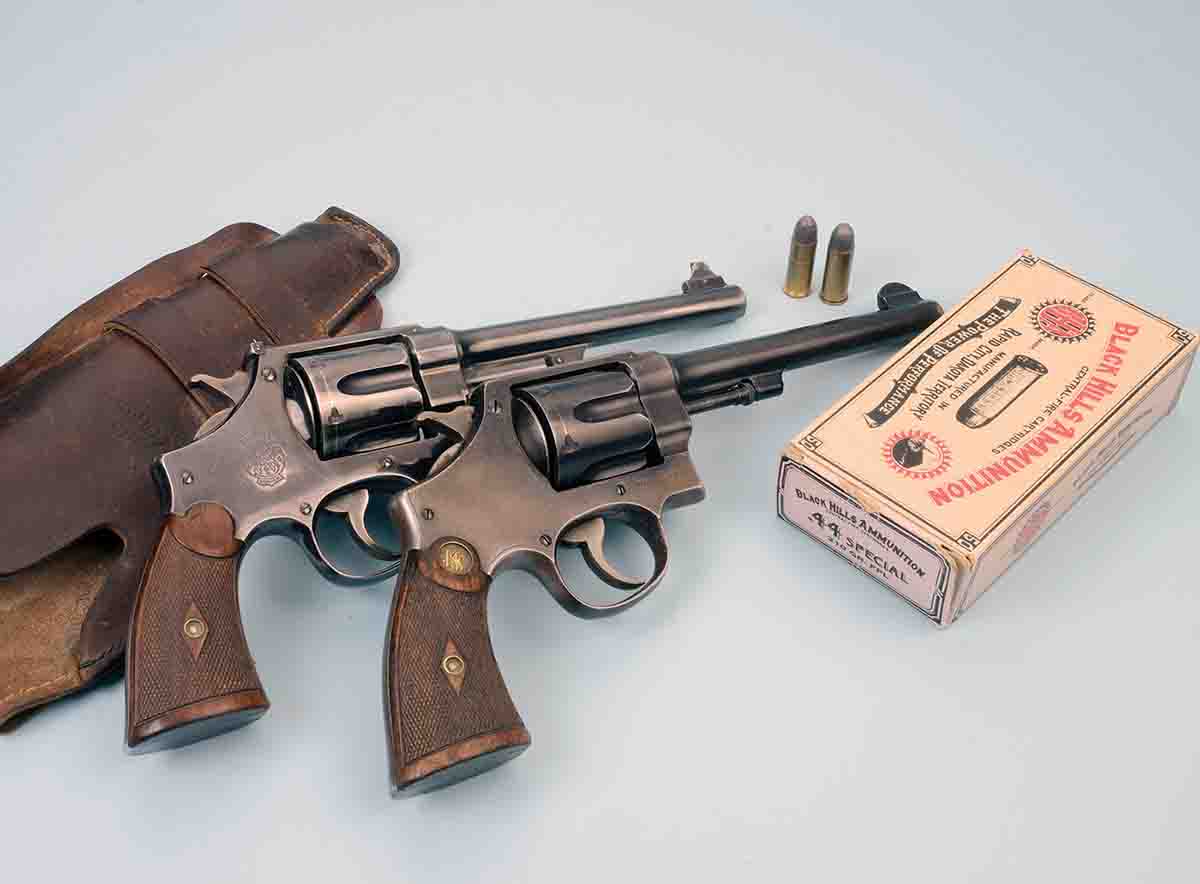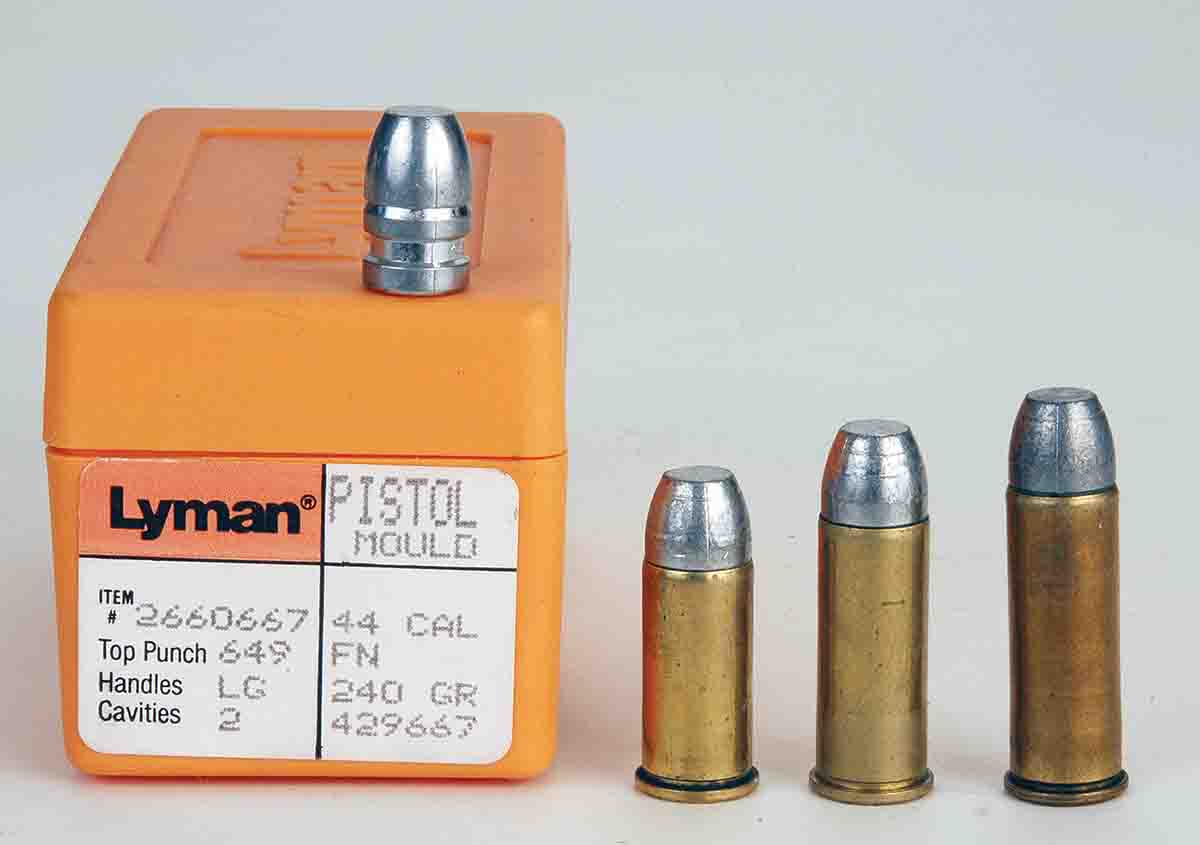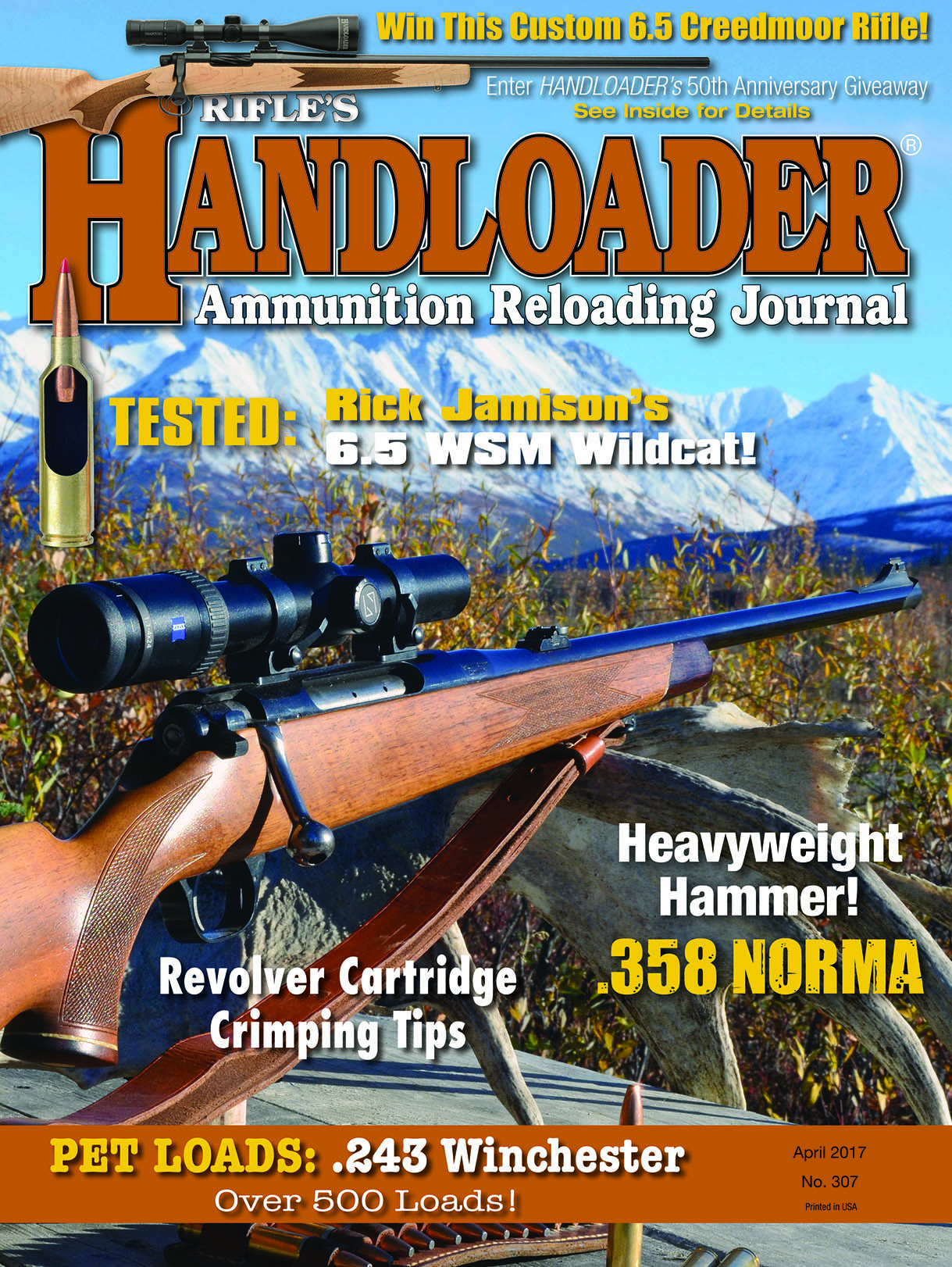Mike's Shootin' Shack
.44 Special
column By: Mike Venturino | April, 17
As with thousands of handgunners and handloaders of my generation, Skeeter Skelton was a great and good influence on me. He was responsible for my interest in the .44 Special and the several dozen revolvers so chambered that I have owned over the past 40 years. Unlike most .44 Special fans, however, I thought my way out of the .44 Special box.
Saying that doesn’t mean I’m anti-.44 Special, only that I prefer .44-40 single actions and .45 Auto-Rim double actions. An S&W Hand-Ejector 1st Model Target (Triplelock) and an S&W fixed-sight Hand-Ejector 2nd Model are still in my vault. Both have 61⁄2-inch barrels. Also, there is a .44 Special cylinder that has been fitted to two of my Colt SAA .44-40s. I’ve owned samples of all pre-1966 S&W .44 Specials, most post-1966 versions and every barrel length of Colt SAA .44 Specials from 3 to 71⁄2 inches of both 2nd and 3rd Generation manufacture. Plus Taurus and Charter Arms five-shooters have been here for evaluation.

Allow me to give an example: My favorite Colt SAA .44-40s are a brace of 1873/1973 Peacemaker Centennials. Their barrel groove diameters are .427 inch and their chamber mouth diameters are .428/.429 inch as measured with plug gauges. A little known fact is that since the early 1900s Colt has used the same barrel interior dimensions for .44 Russian and then .44 Special as for the .44-40, i.e., .427-inch grooves. Yet I’ve actually measured cylinder chamber mouths as large as .435 inch in 3rd Generation Colt SAAs.
In times past I would have bet cash that the .44 Special was never factory loaded with black powder. I would have lost. Dave Scovill convinced me with hard evidence in the form of a 1916 (as I remember) Winchester ammunition catalog. The black-powder charge was 26 grains. Without having tried it, I think those finely fitted S&W Hand-Ejector .44 Special revolvers would have bound up quickly with black-powder fouling.
What I still think concerning .44 Special factory loads is that with their 246-grain roundnose bullets, factory velocities should have been about 100 fps faster, say around 850 to 870 fps. Such would have been well within the strength limitations of Colt and S&W revolvers.
What I do not think .44 Special shooters should do is copy any of Elmer Keith’s old loads from pre-.44 Magnum days. Remember, his idea was to get the .44 Special up to about 1,200 fps with 250-grain bullets. Nearly 30 years ago, upon buying an S&W Hand-Ejector 1st Model Target, I could not resist trying his recommendation as to a powerful handload. At first firing, the cylinder fell open. I shot it again and the cylinder fell open. Common sense overpowered stupidity at that point when I realized a very valuable 1915-era revolver was being endangered by my complacence. So here is my advice to all who might want more velocity than say 900 fps with 240/250-grain, .44-caliber bullets: Get a .44 Magnum revolver.

Good .44 Special powders are most anything in burning rate between Bullseye and Unique. Over the decades I’ve determined that 4.5 grains of Bullseye, 4.7 grains of Titegroup and 5.3 grains of W-231/HP-38 will duplicate the factory load velocity of approximately 750 fps with 240- to 250-grain lead bullets. To get that extra 100 fps of velocity .44 Special factory loads should have had in the first place, 6.0 grains of Unique suffices. As far as I’m concerned, jacketed bullets are wasted at .44 Special velocities.
One area where my own hand-loads deviate from the above recipes is for rounds specifically meant for my Colt SAA .44-40s with .44 Special cylinders installed. Their sights are factory regulated for 200-grain bullets, delivering 245- to 250-grain bullets several inches high at 25 yards. For these revolvers, .44 Special handloads carry any of the 200-grain bullets intended for .44-40 loading.
One benefit the .44 Special has given since moving to our property 30 years ago has been with my Colt SAA .44-40 “Sheriff’s Model” with a 3-inch barrel. Using either homemade shotshells or CCI factory shot loads, it has accounted for more rattlesnakes than I care to remember.


